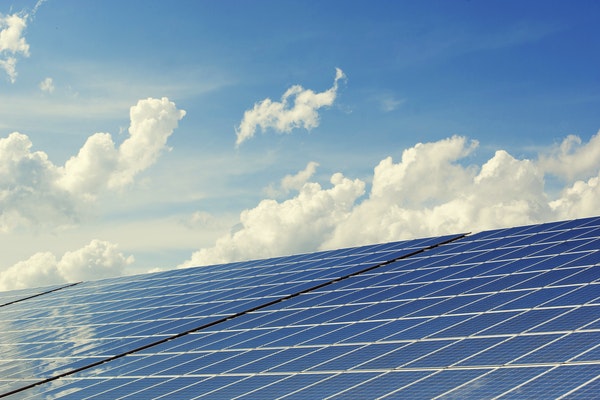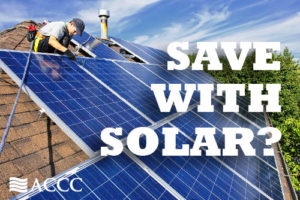Solar power is an increasingly popular energy option, and it’s certainly caught American Consumer Credit Counseling’s attention. It’s good for the environment and, in the long-run, can be great for your budget. However, consumers must weigh the up-front costs, the future savings, and the long-term benefits to decide if it is financially feasible and ultimately worth the expense. Installation isn’t as simple as slapping some solar panels on your roof and plugging them in. Proper placement is important, and additional wiring and other components are needed for a functional solar power system. Let’s break down the costs, the savings, and the long-term benefits.
According to a 2014 Forbes article, the cost of solar panels has dropped by 60% since 2011. The decreasing costs, long-term savings on energy bills, and federal tax incentives make solar power an increasingly feasible and affordable option.
Cost to Install Solar Panels
The cost of the panels and installation can be anywhere from $10,000 to $30,000 depending on the size of your home, the system, the solar resource of your location, and whether you choose to be on or off-grid. You should also examine your previous energy use to determine what kind of system your home will require. Larger systems are more expensive and will generate more kilowatt hours, but let’s not get too technical here. If you’re working on debt management, you should consider whether or not taking on the costs is the right move for now.
Leasing vs. Buying Solar Panels
You don’t have to buy all of the equipment up-front. Several companies offer leasing and financing options to help minimize your up-front costs. If financing makes more sense for your budget, you could also consider getting a loan from a bank with favorable rates to cover the costs, rather than dealing with the solar company.
Solar Power Tax Incentives
The Renewable Energy Tax Credit is a 30% credit for residential solar power systems. A taxpayer may claim a credit of 30% of qualified expenditures for a system that serves a dwelling unit located in the United States that is owned and used as a residence by the taxpayer. This credit is actually given to the solar company, but they will pass the savings onto you.
Saving Money on Your Energy Bills
The whole point of installing solar panels is to reduce the cost of your home energy, right? So how much less does solar power cost? Will the cost of the new equipment be balanced out by lower bills? A monthly household energy bill in the US can vary greatly by region. In 2012, according to the NAHB, most of the country falls in the $80 – $120 range, at an average price of 11.88 cents per kilowatt-hour.
Find-Solar.org has a tool to help you estimate all of the costs of the installation, including the tax credit. It will also estimate your monthly energy bill, as well as the break-even point of your investment. Solar power not in the cards for you? Check out some of our previous articles on reducing your energy bill. There are, of course, other factors that can influence the calculations, but it’s a nice little tool to give you an idea of what you’re getting into.
If you’re thinking about investing in a solar power system, be sure to look for reputable and certified professionals to get accurate estimates for your home.
You’re not alone if you’re struggling to pay off debt. Schedule a free credit counseling session with us today.






